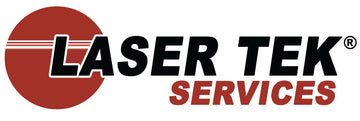Laser Printers use light beams to scan the latent image formed on the rotating OPC Drum or the photo conductor drum. Scanning is possible because the document stream coming from the computer or the server is first transformed into a raster graphic image composed of dots. Each dot is relayed to the OPC Drum through the laser beam delivered by the scanning unit. The process of scanning actually replicates the action of electron beams employed with Cathode Ray Tube(CRT) television sets of the past; where electron beams pass through a series of filters to form the images on the TV screen that is discernable to the naked eye.
In the case of laser printers, laser beams(instead of electron beams)precisely controlled by electrical signals coming from the computer is directed towards the collimator lens and unto a spinning polygon mirror (scanner) that in turn reflects the light beam. Thereafter, the reflected light beam from the laser scanner is redirected and passes through the scanning lens system for fine tuning prior to actual scanning of the OPC Drum. The so called laser printing technology guarantees high precision dot for dot imagery on the focal plane and dot generation at a uniform pitch that produces better printer resolution.
Get the inside story on the industry from Recycle. Refill. Save!
The laser printer scanning unit is composed of several moving parts that make it more vulnerable to mechanical component failure. Of important consideration is the spinning hexagonal shaped polygon mirror that is rated at around 13,000 rpm (revolutions per minute) and must rotate accurately at all times; otherwise precision imagery could not be completed. Moreover, the polygon mirror is prone to paper and toner dust contamination. So as it spins, it is probable for unwanted substances to coat the super-sensitive surface which ultimately results to the produce of light, faded prints. The polygon mirror therefore requires constant maintenance check and must undergo periodic cleaning to achieve quality printouts at all times.
NOW that the myth surrounding the Laser Scanning Unit had been unraveled, users will now be more tolerant towards the maintenance requirement of its components.
Reuse empty toner cartridges and save as much as 80% on printing costs. Visit http://www.lasertekservices.com and shop for the toner refill kit compatible with your cartridge.
Laser printers can print fast at speeds of over 50 pages per minute (ppm)but also need toner cartridge replacement all the time. The pricing of OEM toner cartridges, more often than not, is not within the reach of most consumer budgets. The106R00655cartridge of theXerox Phaser 7750laser printer for instance costs $365 to replace.But if users are not too skittish, they can always try refilling empty toner cartridges with the use of Xerox Phaser 7750 toner refill kit is retailed for only $75 and is guaranteed a yield of 22,000 printed pages and print quality just like that of the OEM toner.





